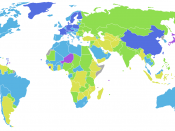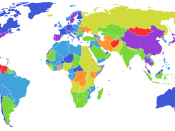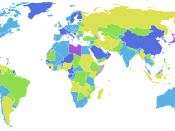Inflation and Deflation
Introduction:
Keeping prices stable is one of the most important economic goals facing any nation. Governments face the responsibility to control inflation due to many factors affected by it. Understanding the definition of inflation will broaden our knowledge to other factors contributed in macroeconomics such as GDP (Gross Domestic Production), CPI (Consumer Price Index), and Deflation...etc.
I will relate my inflation study to US because most information regarding microeconomics is easy to find since everything is archived in USA.
What is Inflation?
Inflation is an increase in the general price level of goods and services in the economy. Therefore, Deflation is a decrease in the general price level of goods and services. But does that mean that inflation is an increase in all goods prices? No, an increase in all goods prices is not called inflation. It has to be an increase in price level for most or general goods and services.
For example, if Toyota Land-cruiser price has increased, then it is not necessarily to say this is the result of inflation. But, if the prices of most cars, lands, properties, food ...etc, have increased then we can say this is inflation.
The Consumer Price Index:
It is an index that measures changes in the average prices of consumer goods and services. CPI is a measure of inflation that is widely reported. It includes only consumer goods and services in order to determine how rising prices affect the income of consumers. Items and services purchased by the government or a business are not considered in the CPI.
The CPI is an indicator of the effectiveness of government policy. In addition, business executives, labor leaders and other private citizens use the index as a guide in making economic decisions.
The USA government chose certain...


